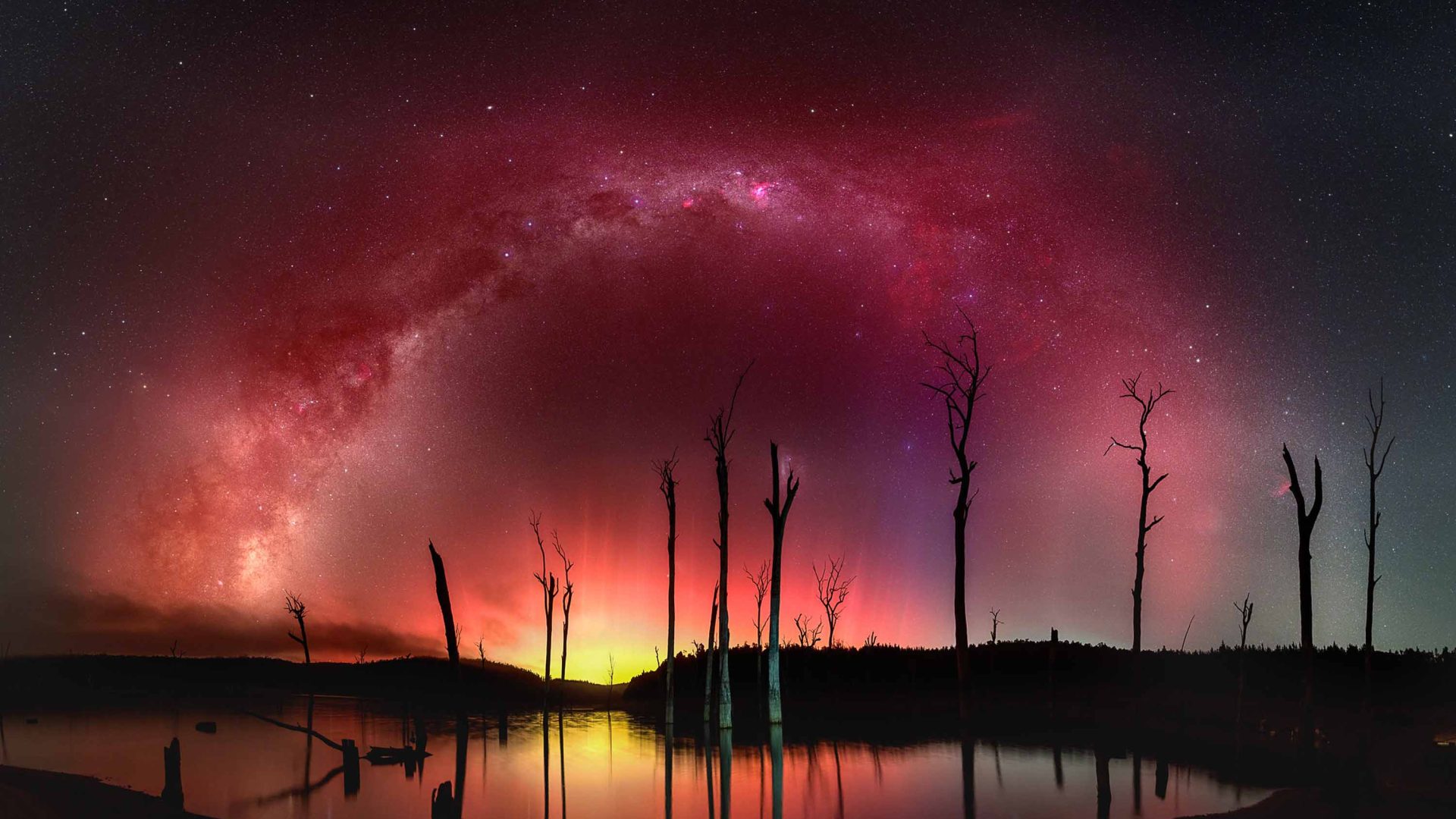
For new mum and writer Sarah Smith, adventure was starting to feel like it belonged in a past life. Until one night she looked up, at her toddler’s request, and found a cosmic adventure waiting.


For new mum and writer Sarah Smith, adventure was starting to feel like it belonged in a past life. Until one night she looked up, at her toddler’s request, and found a cosmic adventure waiting.
“Are they… aliens?” I squeak, much to the delight of my daughter whose eyes are fixed on a slow-moving string of lights marching across the sky above us. Only moments earlier, we’d been caught in the usual bedtime toddler tango, when she suggested we say “goodnight to the moon”.
I sheepishly Google “alien lights over Australia”, only to discover that the confounding Unidentified Blinking Gems are, in fact, just the handy work of Elon Musk. His starlink satellites are making an unexpected appearance over our small Victorian coastal town.
It’s then I hear my partner whisper: “Is that… an aurora?”
It is a question more absurd than our fleeting belief that we were being invaded by an army of extraterrestrials in EVs. But as all three of us shift our attention to the horizon, there it is, stretching wildly across the otherwise ink-black skyline—the undeniable pink and greenish flares of Aurora Australis. It takes us some time to fully compute what is happening, until quite suddenly the penny drops. “Oh my god! Oh my god!” we each start yelling into the silence of the night.
I’m not sure how long the three of us stand, eyes bulging, watching cosmic columns of color dance atop the tree line. It’s like we’ve entered a wondrous vortex where Dr Who’s Tardis might just materialize in the backyard at any moment.
With our daughter finally tucked into bed, my partner and I forgo our usual ritual of slumping on the couch, wine and phone in hand, and instead rug up and spend the evening staring into space. The sky stays ablaze, stars swooshing and constellations sparkling, and it’s not long until we are treated to another explosion of activity. When the aurora reignites, the jangling clouds of purple and green are so vivid that I find myself physically reaching out to the sky around us trying to grab a handful of the color.
I can’t stop thinking about how easily we may have missed this. That, heads down, in the routine of toddler bedtimes and Saturday evening exhaustion, had our daughter not dragged us outside to look up, this beauty may have passed us by.
I consider my partner and I curious beings. With a deep drive to be immersed in nature, we have traveled the world and been lost in the stars many times over. But sometimes, life has a way of distracting us from the wonder right there in front of us.
During the early stages of parenthood, your world shrinks. During those wild early months of sleep deprivation and self-doubt, phones feel like a fantasy portal to the outside; social media algorithms cruelly feeding through an absurd see-saw of mumfluencers rhapsodizing about organic baby food and old acquaintances sipping wine on the Amalfi Coast. Adventure can begin to feel like an absurdist construct. Completely ungraspable.
But then life recalibrates, and a few years into it, your toddler forces you outside on a cold evening and there in the backyard of your tiny hometown you experience the kind of wonder that recalls your wildest and most mesmerizing overseas adventures. And for all the heaviness of the world right now, you stop and feel a connection to this mysterious ball of rock. The kind of stupefying awe that can only come from such a surprising encounter with natural beauty.
Of course, you don’t need a 20-year geomagnetic storm to feel this. You don’t have to be in a far-flung place. You just have to be present, to slow down, and to look up (easier said than done, I know). But even just by stepping outside for a few minutes on a clear night, there is all kinds of strange beauty to be soaked up. And who knows, you might just spot an alien or two.
Take a moment to look up for these cosmic and astronomical moments in 2024:
June 27: The “Occultation” of Saturn
What? When the moon and Saturn “pass” each other in the sky
Where: Southern Hemisphere
August 11–12: The Perseid meteor shower
What? Earth passes through debris from the Swift-Tuttle comet, producing 60 shooting stars per hour
Where: Northern Hemisphere
18 September and 17 October: Supermoon
What: A full moon that occurs when the moon is the closest it can be to the earth
Where: Northern and Southern Hemisphere
December 13-14: Geminid Meteor Shower
What: One of the most spectacular meteor showers, it is caused by debris from the 3200 Phaethon asteroid
Where: Northern and Southern Hemisphere
***
Adventure.com strives to be a low-emissions publication, and we are working to reduce our carbon emissions where possible. Emissions generated by the movements of our staff and contributors are carbon offset through our parent company, Intrepid. You can visit our sustainability page and read our Contributor Impact Guidelines for more information. While we take our commitment to people and planet seriously, we acknowledge that we still have plenty of work to do, and we welcome all feedback and suggestions from our readers. You can contact us anytime at hello@adventure.com. Please allow up to one week for a response.

Sarah is a writer, broadcaster and wanderer. She has spent most of her life as a music journalist, but loves writing about adventures of all kinds and interviewing interesting humans. She currently lives on the Bellarine Peninsula in Australia.




Can't find what you're looking for? Try using these tags: